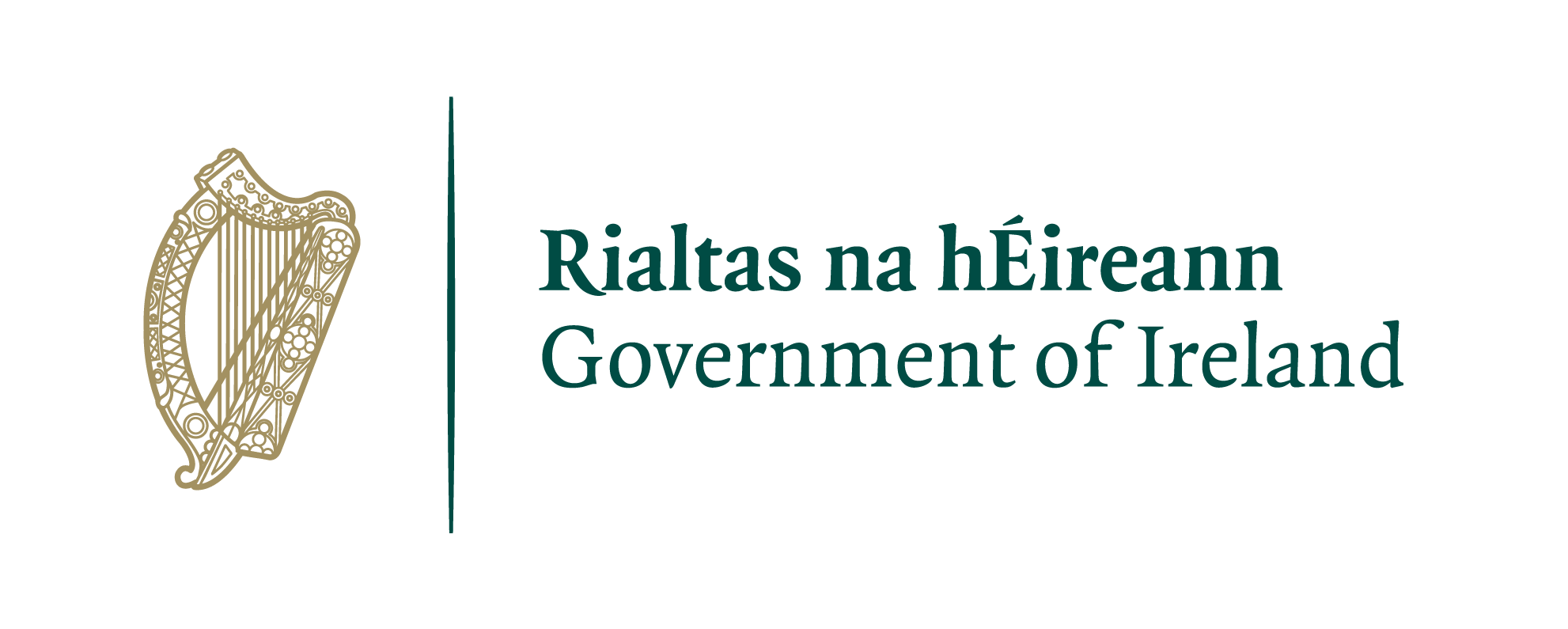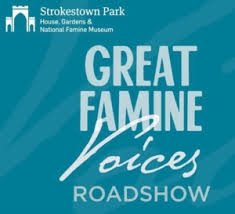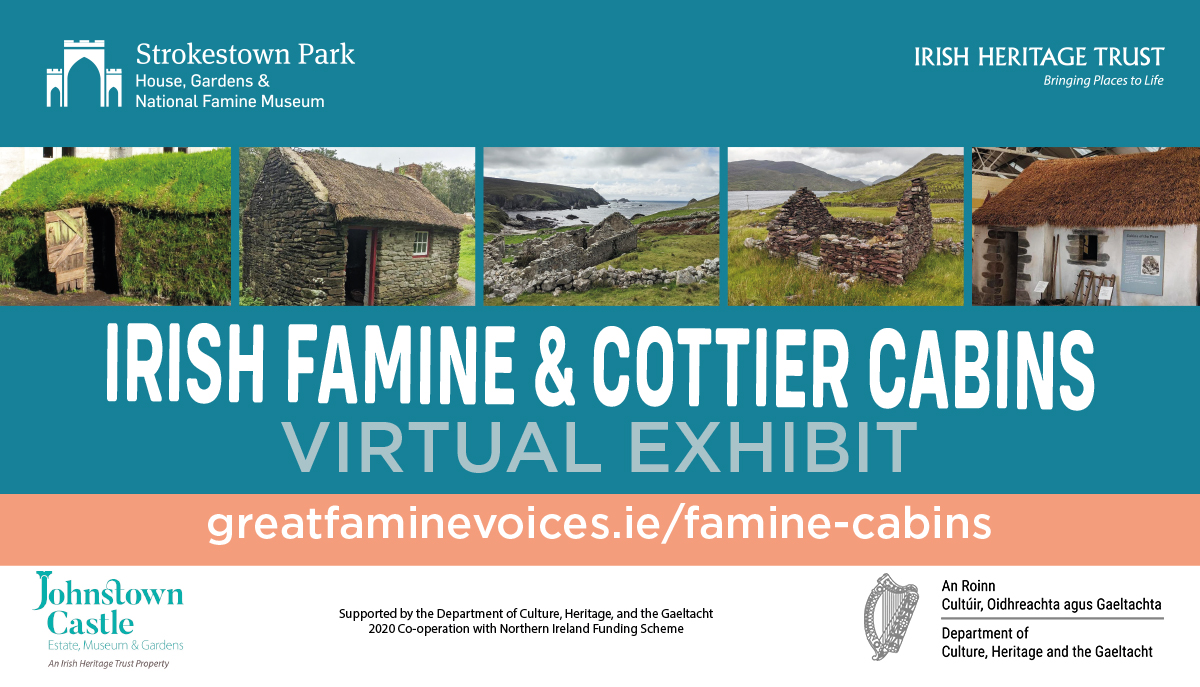

An Port, County Donegal
Famine Cabins and Cottier Evictions in Irish Folklore
Cathal Póirtéir (writer, broadcaster, and folklorist) reflects first in English and then in Gaelic on the leveling of cottier cabins on the Strokestown Park House estate. He considers the role that Famine era evictions and emigration played in inciting the assassination of the landlord Major Denis Mahon on 2 November, 1847, at the site of his tomb in the ruined seventeenth-century mausoleum and church. He notes the contrast between this ruin which still stands and the numerous cottier cabins on the estate of which almost no trace remains. Learn more here.
Archival Remains of Famine Cabins in Strokestown
Documentary records of eviction, petitions and the leveling of cottier cabins on the Strokestown Park House Estate during the Great Hunger. Discover more here.
Archaeological Remnants of Famine Cabins
Professor Charles Orser (Distinguished Professor Emeritus, Research Professor, Vanderbilt University) reflects on “The Archaeology of Famine Era Cottier Cabins on the Strokestown Park Estate”.
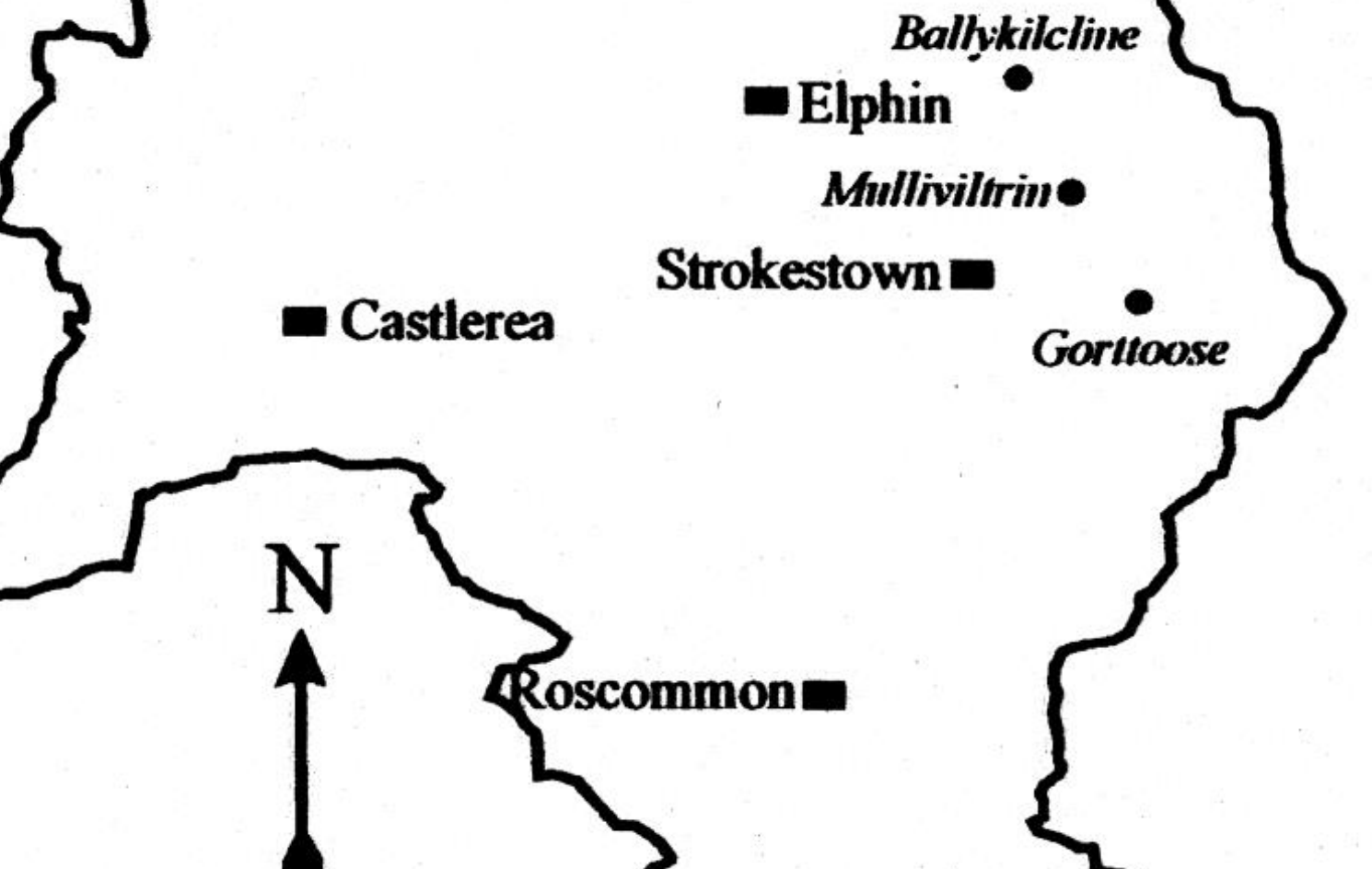
Map of Charles Orser’s excavation sites of Famine cabins on the Strokestown estate (above) and Ballykilcline excavation site near Stroketown Park House below.
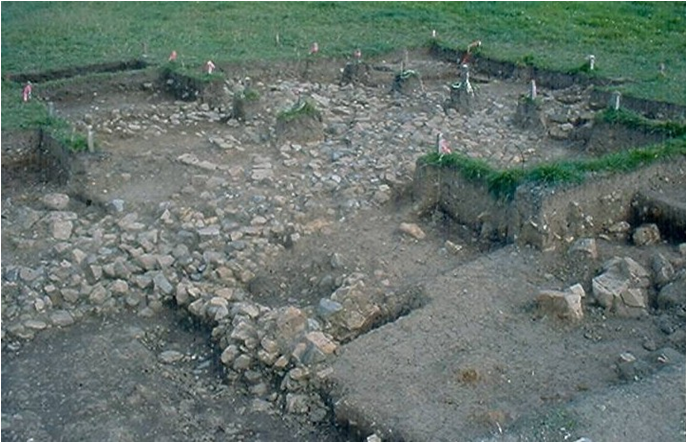
Recovering Cottier Lives and Dwellings
Dr Claudia Kinmonth (Research Curator, Domestic Life, Ulster Folk Museum, National Museums, Northern Ireland) explores cottier cabins’ interiors, vernacular furniture and portrayals in contemporary art above. Below she demonstrates the uses of some of the household items and scant possessions to be found in a cottier dwelling. Learn more here.
Irish Famine and Cottier Cabin Case Studies: An Bothán (recreation of a famine mud cabin), University College Cork
Mike Murphy (Department of Geography, University College Cork) inside the replica of the mud hut, an bothán, which was built on the university campus for the 2018 National Famine Commemoration Day and withstood the elements until 2020. He notes that the the poorest of the poor lived and died during the Great Hunger in these fourth class sod cabin dwellings. He discusses the Great Irish Famine Online digital resource developed in collaboration between University College Cork and the Department of Culture, Heritage, and the Gaeltacht below.
Meenagarragh Cottier’s House, Ulster Folk Park
Victoria Millar (Senior Curator of History, National Museums, Northern Ireland) at the Meenagarragh Cottier House in the Ulster Folk Park. She notes that it is characteristic of the type of single room dwelling that was common especially throughout western Ulster during the period of the Great Hunger. Below she explores the interior of the Meenagarragh Cottier House and the few household items and domestic furnishings of its occupants. Discover more here.
Single Room Cabin, Ulster American Folk Park
Liam Corry (Curator of Emigration, National Museums Northern Ireland) at the Single Room Cabin, Ulster American Folk Park. He talks about emigration and the impact of the Great Hunger on cottier cabins and fourth class housing in County Tyrone and Ulster below. Learn more here.
Liam Corry discusses potato ridges near the Single Room Cabin in the Ulster American Folk Park above and explores its interior below. He also reflects on the role of costumed interpreters in bringing the Single Room Cabin for visitors to life. Discover more here.
Cabin of the Poor, Famine Exhibition, Irish Agricultural Museum — Johnstown Castle
Dr Austin O’Sullivan (founding curator of the Irish Agricultural Museum) reflects above on the Cabin of the Poor in the museum’s Famine Exhibition. Below he recounts how its design was inspired by his chance discovery of a single room dwelling in Abbeyfeale, County Limerick, as well as the sparse household items within. Discover more here.
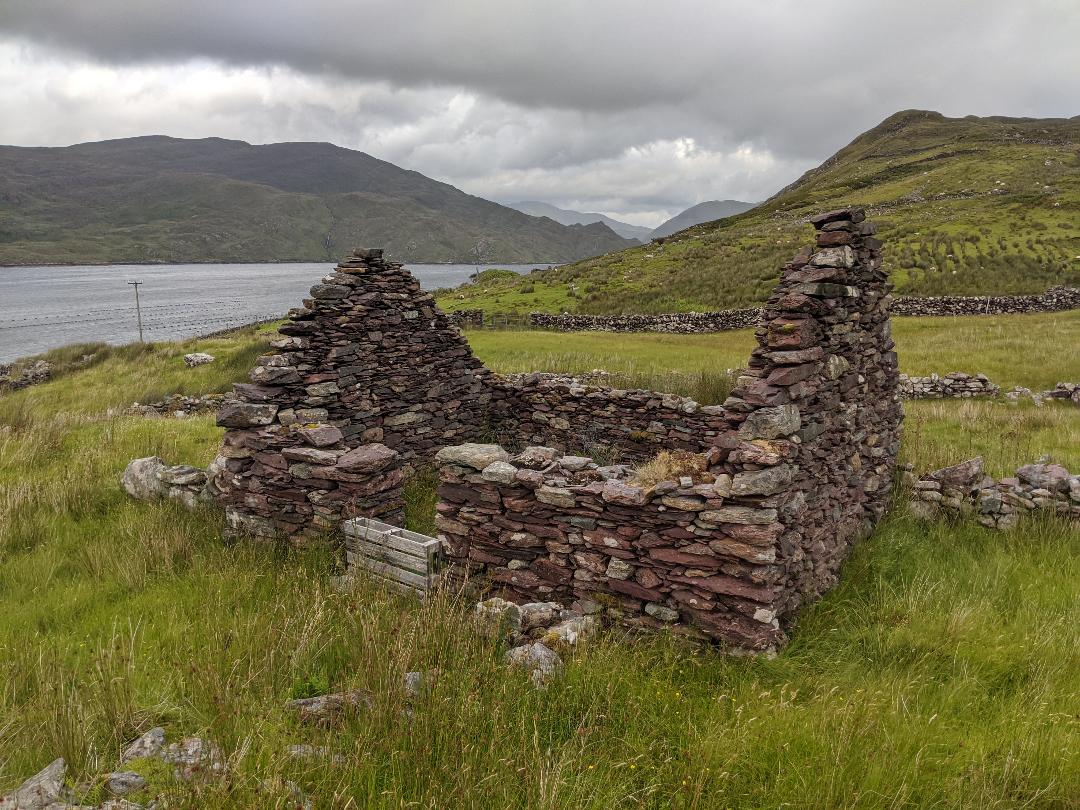
Foher, County Galway.

Irish Famine and Cottier Cabins Expert Meeting, National Famine Museum, Strokestown Park, September 19, 2020
10 — 10:15am Welcome (Strokestown Park House Cafe)
10:30-11:30 Session 1. Interpretive Challenges: Recovering Cottier Lives and Dwellings (Gymnasium)
Chair: Dr Jason King (Irish Heritage Trust)
1) Professor Charles Orser (Distinguished Professor Emeritus, Research Professor, Vanderbilt University)
“The Archaeology of Famine Era Cottier Cabins on the Strokestown Park Estate”
2) Dr Claudia Kinmonth (Research Curator [Domestic Life], Ulster Folk Museum [National Museums, NI])
“Famine era Cottier Cabins’ Interiors, Vernacular Furniture, and Artistic Representations”
3) Liam Corry (Curator of Emigration, Ulster American Folk Park [National Museums, NI])
“The Single Room Cabin, Ulster American Folk Park”
4) Mike Murphy (Head of Cartography, Geography Department, University College Cork)
“An bothán” Replica Mud Hut, Fourth Class Housing, and Great Irish Famine Online”
5) Cathal Póirtéir (writer, broadcaster, and folklorist who works in English and Irish)
“Famine Cabins and Evictions in Irish Folklore”
11:30 — 12pm Coffee Break (Strokestown Park House Cafe)
12- 1pm Guided Tour of Strokestown Park House
1-2pm Lunch (Strokestown Park House Cafe)
2-3:30pm Individual Recording Sessions (Library, Strokestown Park House). Visit National Famine Museum & gardens.
3:30-4pm Session II: Lesson Learning
